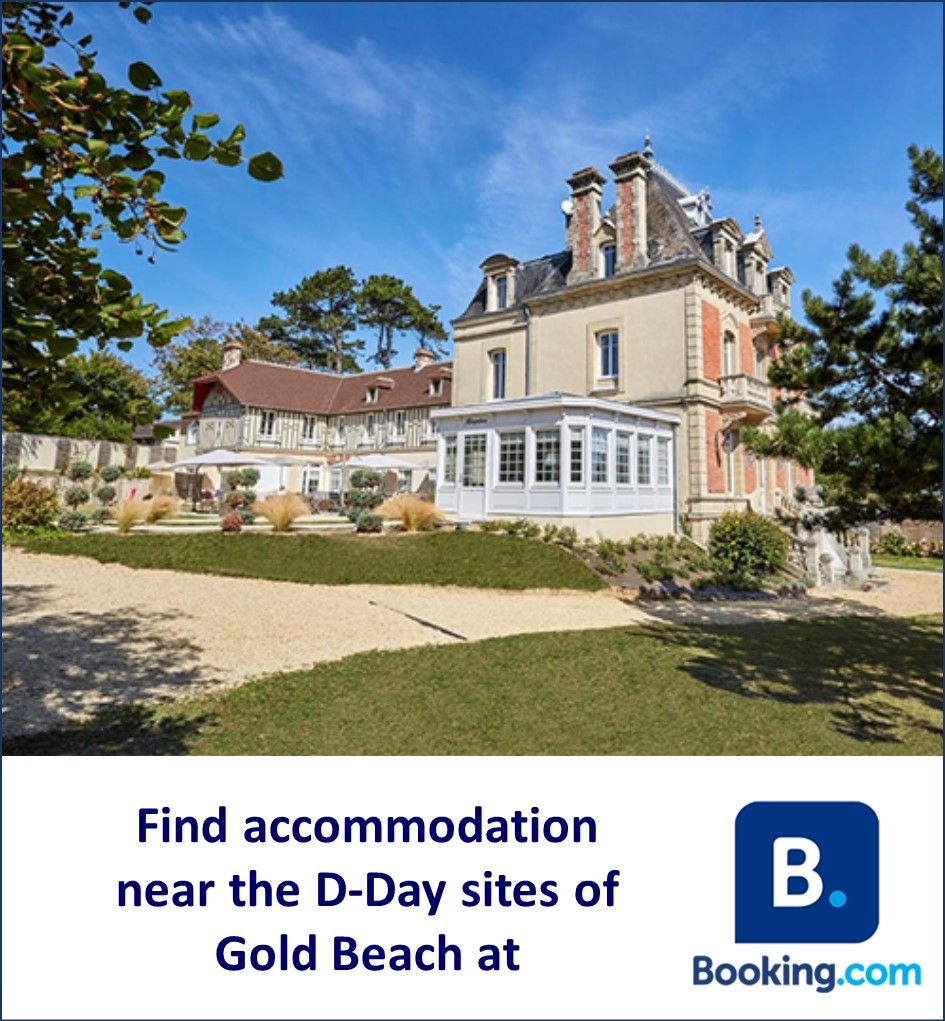Arromanches-les-Bains, once a tranquil fishing village where those not involved in fishing farmed the fertile surrounding lands, became a beloved seaside resort by the end of the 19th century. Tourists admired its peaceful location, beautifully surrounded by cliffs, making the beaches around Arromanches popular among holidaymakers. However, on June 6, 1944, the beach took on a completely different appearance as it became the scene of bloody battles. It was one of the five invasion beaches where the Allies launched their attack on the Germans. The codename for this beach was Gold Beach. Consequently, it’s not surprising that there are numerous D-Day attractions around Arromanches at Gold Beach. But before we take you on a journey through the main highlights, here’s some information about the invasion at Gold Beach.
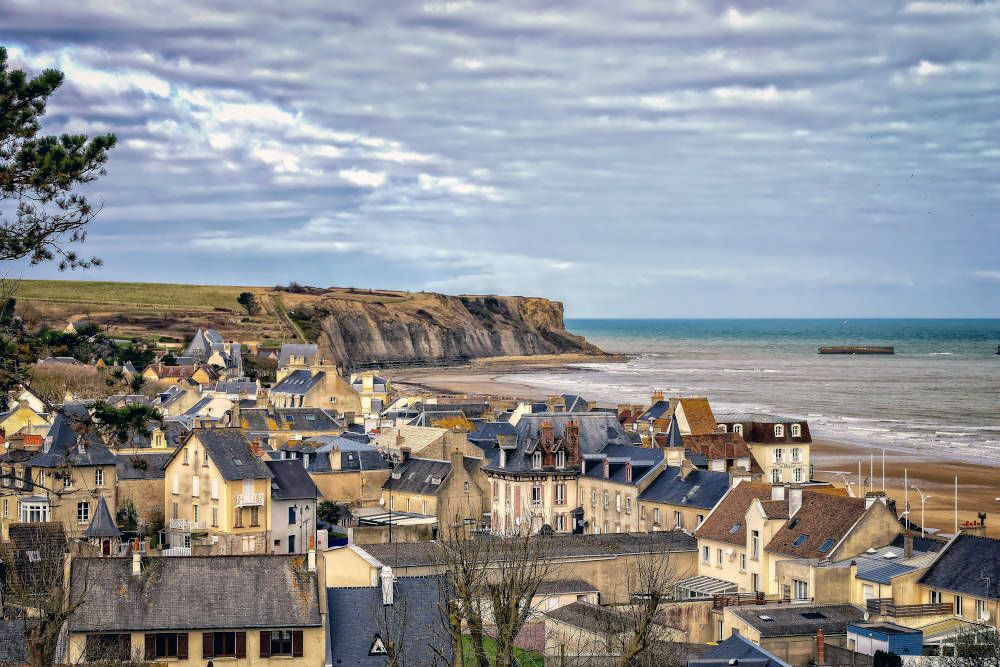
Gold Beach and D-Day
British troops were tasked with capturing this eight-kilometre-wide beach around Arromanches, aiming to swiftly conquer the area to establish an artificial port, enabling the Allies to send new troops and equipment to Normandy. Additionally, the British troops had to liberate Bayeux and cut off the road between that city and Caen from the Germans.
The invasion was arduous, facing intense German resistance. The turbulent sea and rising tide further complicated the situation. The initial troops’ objective was to detonate obstacles on the beach, but these had already been submerged by the tide. To make matters worse, almost all of the first landing craft ran aground on the laid mines. The amphibious tanks also struggled to reach the coast under their own power. Delivering the tanks with landing craft was time-consuming, delaying their ability to unleash fire on the German positions.
Ultimately, the English broke through the defensive lines and liberated La Rivière as the first location around 10 o’clock. Later that afternoon, Le Hamel also fell into British hands. By midnight, around 25,000 British soldiers had landed on Gold Beach. They had advanced 10 kilometers into enemy territory. The crucial coastal town of Arromanches was taken that evening, and shortly after, the British reached the outskirts of Bayeux. Mission accomplished!
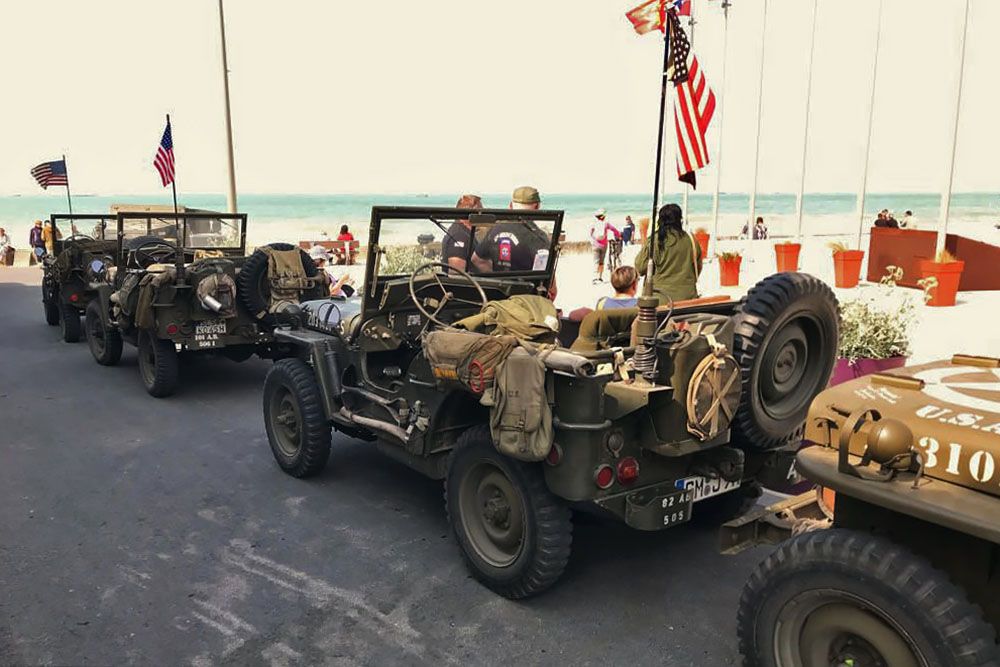
D-Day sites around Gold Beach
You shouldn’t miss these D-Day sites around Gold Beach.
Landing Museum in Arromanches
The landing museum, known as Musée du Débarquement in French, narrates the captivating story of the logistical operation to supply troops during the Battle of Normandy. The success of Operation Overlord primarily relied on the speed of transporting troops, equipment, and supplies to Normandy, where ports were crucial.
In 1942, the Allies had unsuccessfully attempted to capture the port of Dieppe. It was anticipated that conquering sea ports would be challenging, as the Germans would fiercely defend or destroy them. Hence, the plan to construct two artificial harbours, known as Mulberry Harbours, to transport supplies and equipment to Normandy.
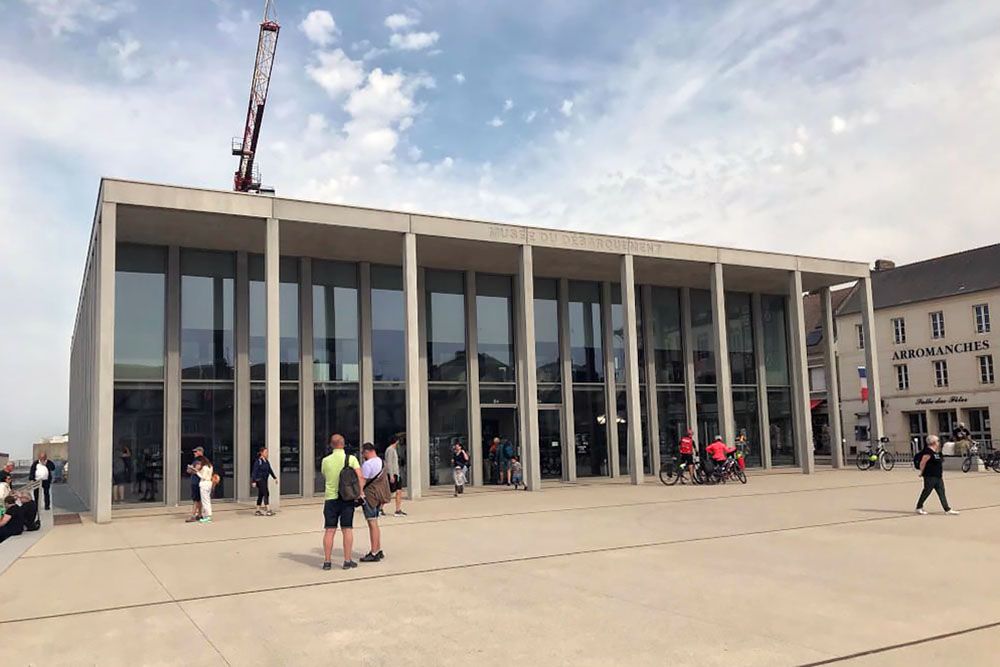
Remarkable achievement
Shortly after June 6, we visit the museum, housed in a brand-new building by the sea and the square aptly named Place du 6 Juin. Equipped with a Dutch audio tour, we embark on a two-hour journey, listening to and witnessing all the phases involved in establishing the artificial harbour. We learn that Churchill had raised the idea early in the war, how British engineers developed a plan for building the harbour, and the immense logistical operation that ensued. The museum is highly interactive, featuring spectacular animations of models, ensuring an engaging experience.
The logistics figures are staggering: through this harbour, the Allies were able to land approximately 220,000 troops, nearly 540,000 tons of supplies, and nearly 40,000 vehicles in about 100 days. Furthermore, the harbour was damaged by a severe storm, causing a near standstill in transportation during that period.
Outside, only a few caissons in the sea remain as reminders of the artificial harbour at Arromanches. However, the images we saw in the museum leave a lasting impression.
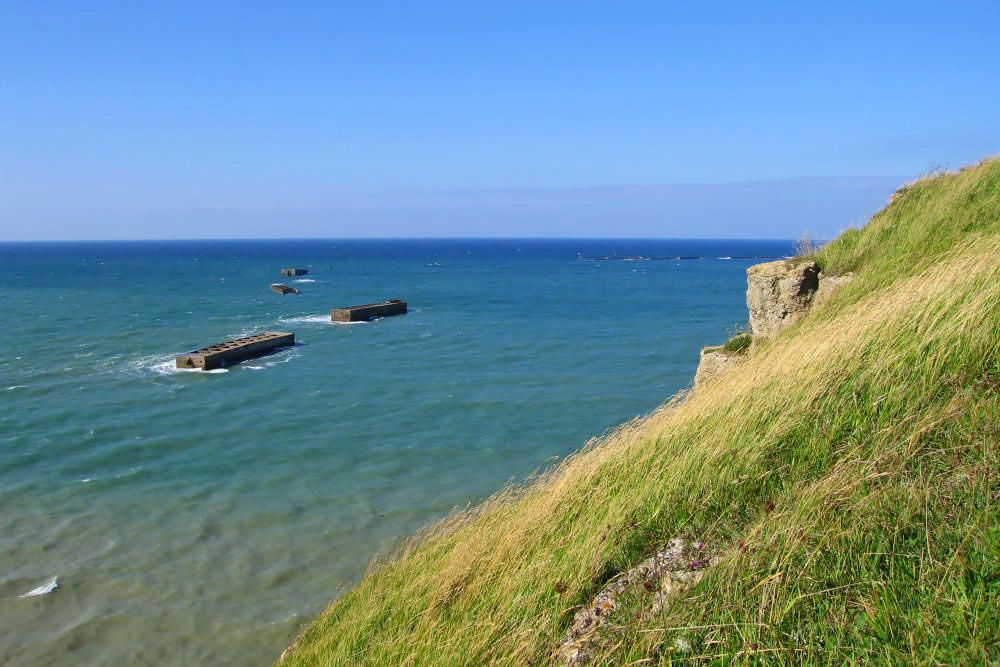
360-degree cinema in Arromanches
Located near the landing museum is this unique cylindrical cinema. Giant screens surround the visitor, providing an immersive experience of the pivotal events of D-Day during the 20-minute film. Notably, all the footage is original, captured by war journalists from all involved nations, including German material. In addition to the visual spectacle, the sound is overwhelming, creating the sensation of trying to reach the beach amidst continuous gunfire.
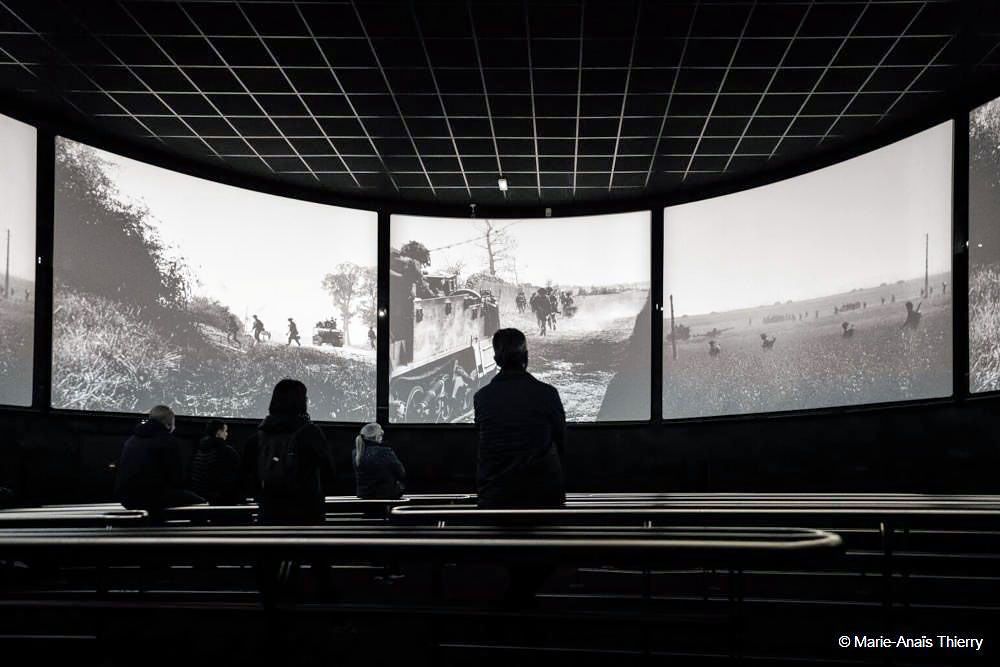
British Normandy Memorial in Ver-sur-Mer
The British Normandy Memorial in Ver-sur-Mer stands as a tribute to over 22,000 English soldiers and personnel from the entire Commonwealth. Located on a site overlooking Gold Beach, where the British troops made their invasion, the monument’s centerpiece is a bronze sculpture featuring three life-sized figures of soldiers who landed during D-Day.
Surrounding the sculpture is the central memorial garden. The “D-Day Wall” bears the names of all fallen British soldiers on 6 June, while the names of those who perished during the further course of the Battle of Normandy are inscribed on 160 white pillars. The site’s distinctive feature is the long intersecting paths, resembling the design of the British flag when viewed from above. Despite being a relatively new monument, its opening took place during the 75th commemoration of D-Day, while it was still under construction. It’s surprising that the valiant English fighters who fought for our freedom had to wait so long for a fitting tribute.
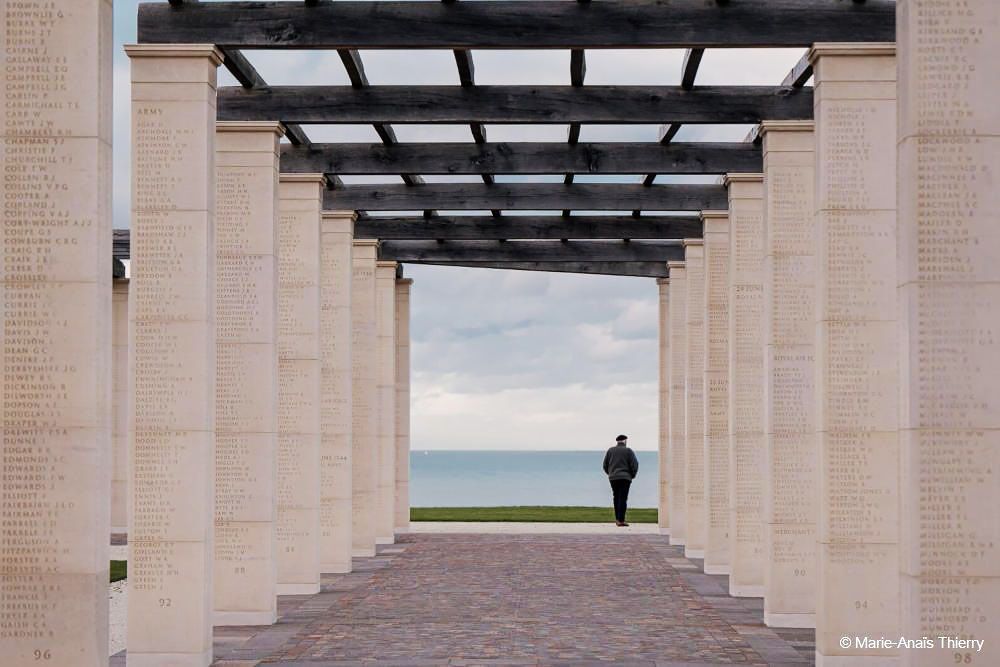
German Battery at Longues-sur-Mer
Near the town of Longues-sur-Mer, a German artillery battery was tasked with providing defense. The cannons could not only reach Gold Beach but also Omaha Beach to the west.
Accompanied by an English-speaking guide, we walk across the site. What sets this battery apart is that the original cannons are still in the bunkers. And what cannons they are! They were capable of firing 45-kilogram shells with a range of over 20 kilometers.
Our guide explains that the defensive structure was built in about four months. In 1944, the Germans had the idea that an attack might occur in this location. Hence, the occupiers hastily constructed this complex. By the end of May, nearly everything was operational. Only the fire control post was not fully equipped with the necessary gear. On the 5th of June, it was ready for use.
The story that the guide then tells astonishes us. On the 5th of June, the commander informed the mayor of Longues-sur-Mer, “Tomorrow we will hold a drill with the cannons, be prepared!”. No drill, they immediately went into action. In the early hours of the 6th of June, the men faced the most severe practical exam. Unfortunately for them, they failed, as after intense fighting, the Allies were able to disable the five cannons.
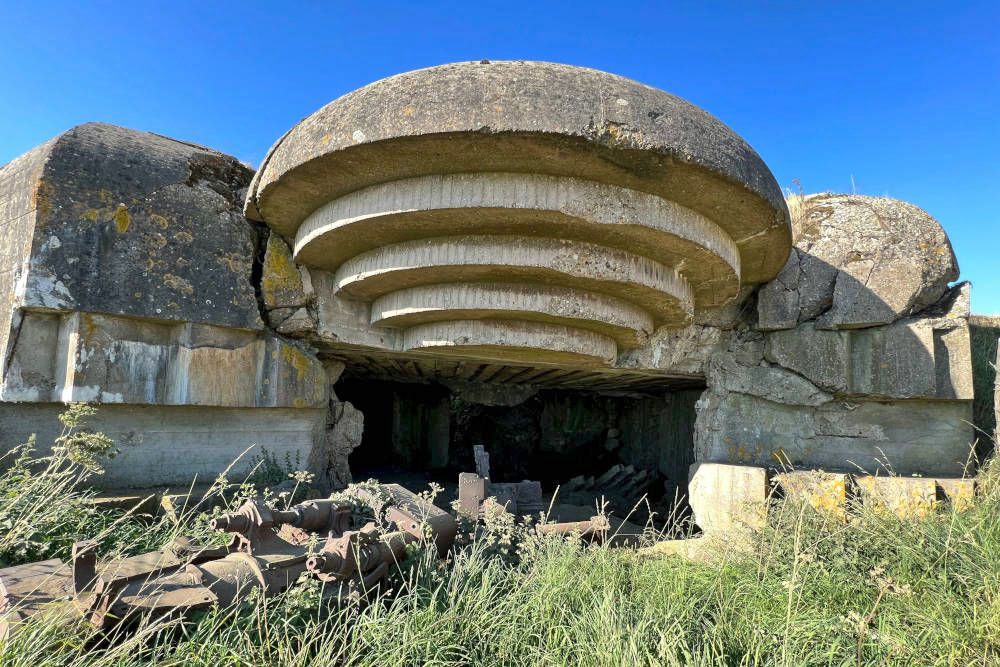
Museum of Underwater Wrecks
The Museum of Underwater Wrecks in Port-en-Bessin offers a unique insight into the hidden history of World War II, particularly the shipwrecks from the Normandy invasion period. Visitors can delve into the techniques of shipwreck exploration and recovery, as well as the stories of the ships involved in D-Day.
Through interactive exhibitions, captivating narratives, and authentic artifacts, the museum provides an opportunity to explore the underwater world of war and understand the sea’s impact on the military conflict, shedding new light on this often-overlooked aspect of maritime history.
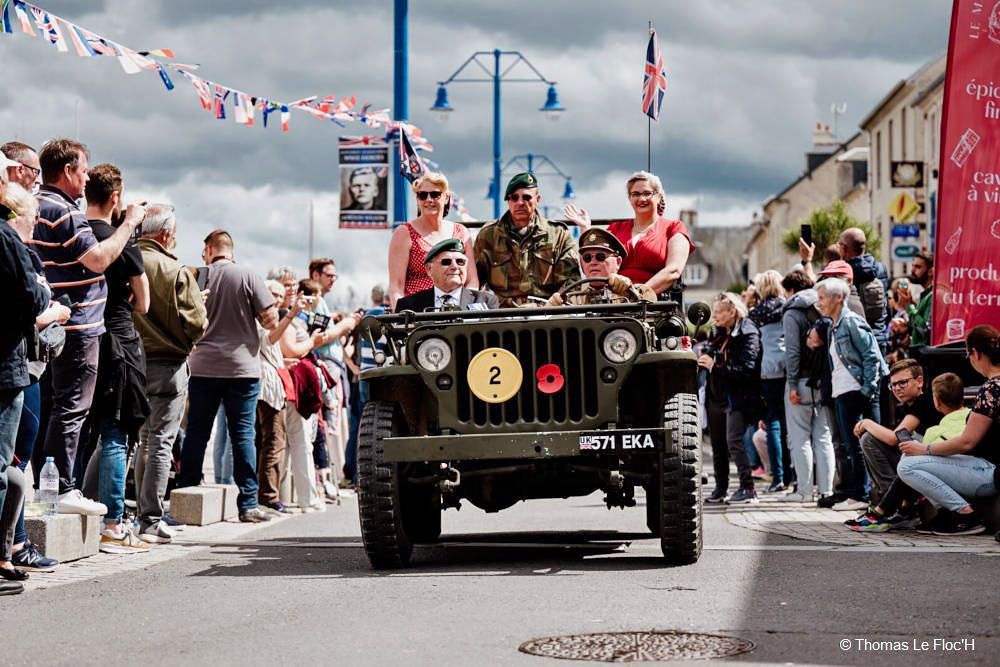
Sights in Bayeux
Following the swift advance of British troops from Gold Beach to Bayeux, the city was liberated by the early morning of the next day, making it the first city in the French inland to be freed. Several sites in Bayeux commemorate D-Day and the Battle of Normandy.
Commonwealth Cemetery
The Bayeux War Cemetery is the resting place for over 4,000 Allied soldiers who lost their lives during the Battle of Normandy. The meticulously maintained graves serve as a poignant tribute to those who made the ultimate sacrifice for freedom.
Adjacent to the cemetery stands the Bayeux Memorial, honouring over 1,800 Allied soldiers with no known grave. This monument, with an imposing column, adds to the reverential character of the cemetery.
During our early morning visit, a few days after the 79th D-Day anniversary, we are the only visitors. Quietly and respectfully, we walk past the numerous graves, the chapel, and the monument. Fresh flowers adorn many spots, not only at the monuments but also at various graves. Fortunately, the heroic deeds of the troops and the price they paid are never forgotten.
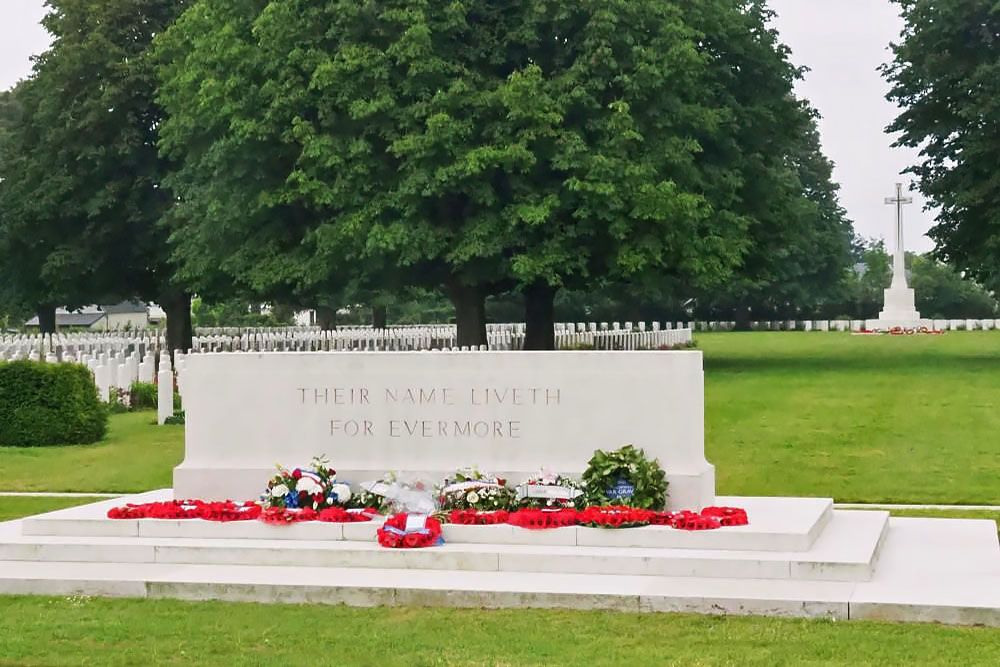
Battle of Normandy Memorial Museum
Situated opposite the cemetery, the Normandy Battle Memorial Museum, or Musée Mémorial de la Bataille de Normandie, is a vast museum. True to its name, the museum does not only focus on D-Day but covers the entire Normandy operation, from the preparations to the liberation of Paris.
Employing innovative scenography with multimedia installations, dioramas, and 3D models, the museum brings the events of 1944 to life. Visitors can delve into the complex strategies, intense battles, and the impact of the battle on the local population.
In addition to the military aspects, the museum also delves into the human side of the war. It showcases personal testimonies, photographs, and objects that provide a moving portrayal of the experiences of soldiers and civilians.
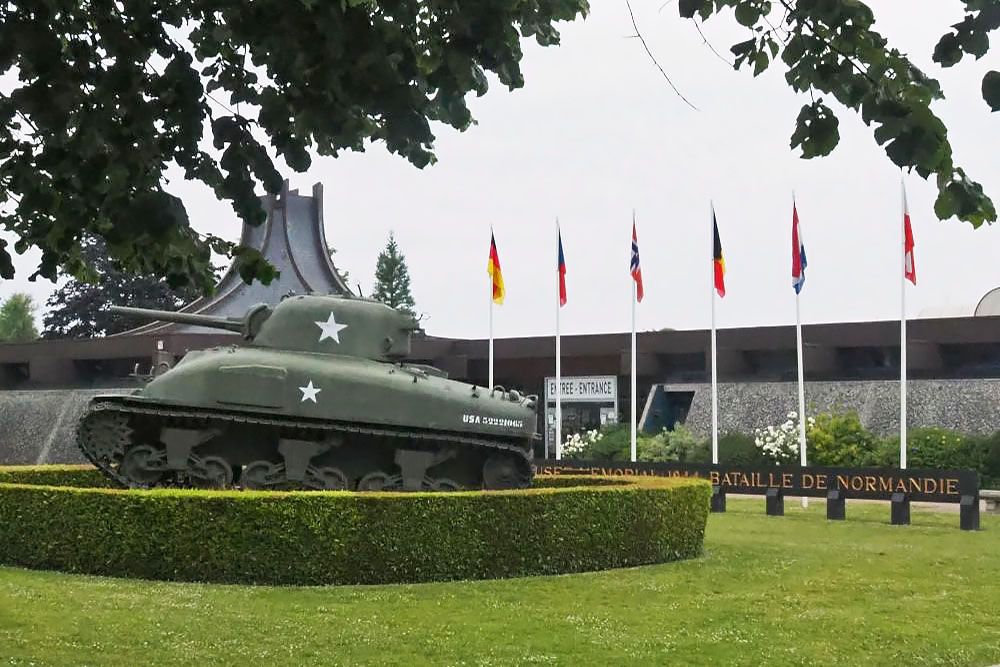
Bayeux, base for visiting the landing beaches
Bayeux is a beautiful medieval town with picturesque streets, ancient architecture, and a warm, relaxed atmosphere. The city exudes timeless elegance with its cobbled streets, timber-framed houses, and colourful flowers adorning the facades.
What truly sets Bayeux apart is its historical significance as one of the few towns in Normandy that remained unscathed during World War II. The lively market squares, local boutiques, and cosy cafes invite leisurely exploration. The majestic cathedral and beautiful gardens add a touch of grandeur to Bayeux. The town’s highlight is the Bayeux Tapestry, an 11th-century masterpiece depicting the Norman conquest of England in 1066.
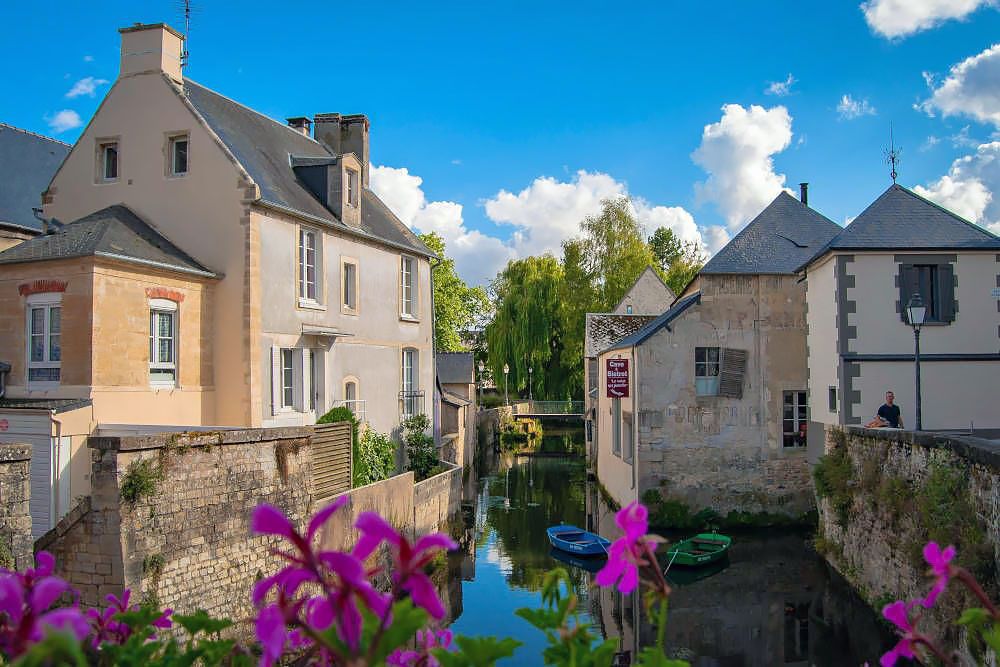
Due to its proximity to Gold Beach, Bayeux is the ideal base for exploring the sights at Gold Beach. Not only is this invasion beach within easy driving distance, but the other beaches are also quickly and easily accessible from Bayeux, including by public transport.
With these illustrious sites, you get a more than comprehensive view of the D-Day attractions at Gold Beach. Do you want to take a break from all that wartime violence and see or do other things? Then take a look at our page about Normandy. You will undoubtedly find inspiration there.
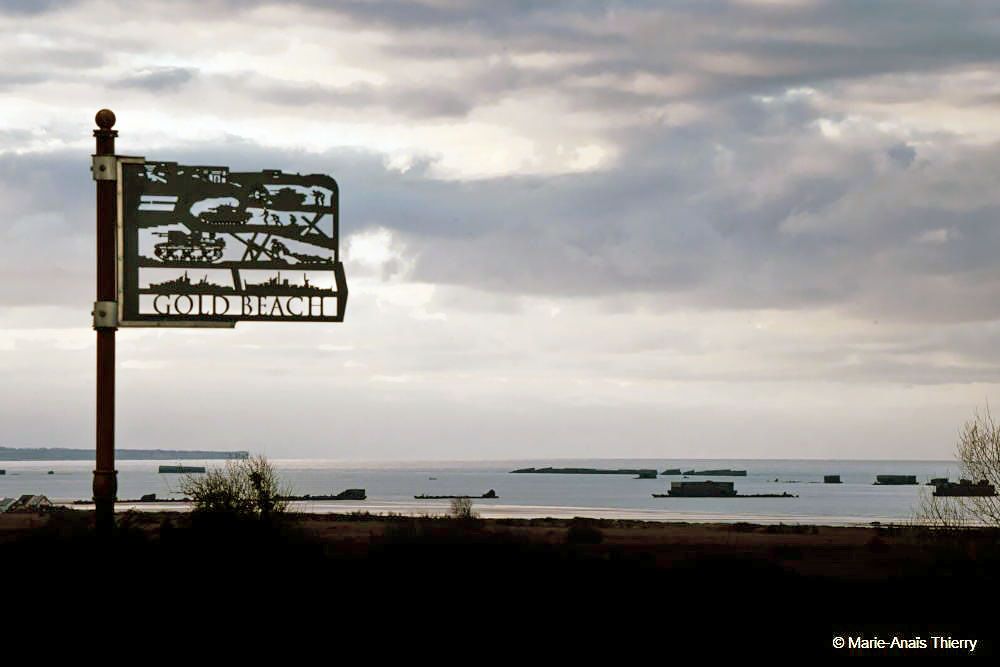
Practical information for visiting D-Day sites at Gold Beach
Gold Beach, the central beach among the five invasion beaches, is situated near the Normandy town of Arromanches-les-Bains. The nearest major city is Bayeux.
Gold Beach was allocated to the British troops. The objective of the Allied forces at Gold Beach was to secure the coast, breach German defences, and establish an artificial harbour. During the landing at Gold Beach, the British faced strong German defences but ultimately managed to capture the area, albeit with significant losses. The successful conquest of Gold Beach contributed to the establishment of a crucial bridgehead for the Allies.
These landmarks offer an in-depth insight into the events surrounding Gold Beach and the Battle of Normandy:
- Landing Museum in Arromanches: This museum tells the story of the logistics operation to supply troops during the Battle of Normandy and the development of artificial harbors for transporting supplies and equipment to Normandy.
- 360-degree Cinema in Arromanches: This cylindrical cinema provides an immersive experience of the events of D-Day with original footage and overwhelming sound.
- English War Memorial in Ver-sur-Mer: This memorial honors over 22,000 English soldiers and servicemen from the entire Commonwealth with life-size statues of soldiers and a memorial garden with the names of fallen British soldiers.
- German Battery at Longues-sur-Mer: This attraction showcases the original cannons in the bunkers that were responsible for defending Gold Beach.
- Museum of Underwater Wrecks: This museum provides insight into the hidden history of World War II, with exhibitions on shipwrecks from the invasion of Normandy and maritime history.
- Sights in Bayeux: The Commonwealth Cemetery and the Bayeux Memorial house the graves of Allied soldiers who lost their lives during the Battle of Normandy. The adjacent Memorial Museum of the Battle of Normandy highlights the entire operation in Normandy, from the preparations to the liberation of Paris.
The D-Day memorials and other interesting locations around Gold Beach are fairly spread out. Therefore, a (rental) car is the most obvious transportation option. You can reach the locations from Bayeux, the nearest larger town. An excellent alternative is the bus from Bayeux. Additionally, various tours can be booked through our partner GetYourGuide. However, please note that during such tours, the visits to the various memorial sites are relatively short. For this reason, we find the tours less suitable for those with a keen interest in history.
In the vicinity of Gold Beach, there are many accommodations, particularly in the towns of Arromanches-les-Bains, Saint-Côme-de-Fresné, and Asnelles.
An alternative is to stay in the beautiful medieval town of Bayeux. This town is also the perfect base for most invasion beaches. Check out the overview of accommodations in Bayeux.
Other topics you may be interested in
- On a cycling holiday along the Vélomaritime in Normandy
- Normandy: historical sights and beautiful nature
- Mont-Saint-Michel, iconic island near Normandy
- Côte d’Albâtre in Normandy | the nicest villages



